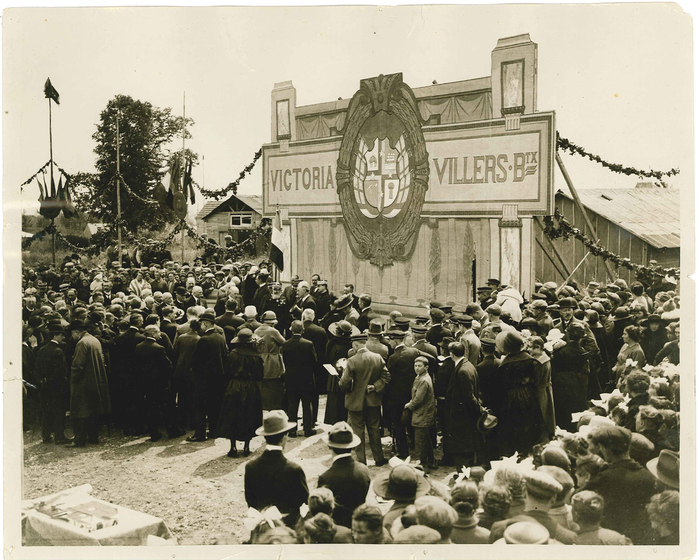Rebuilding the school at Villers-Bretonneux, Victoria College
The Villers-Bretonneux School Photograph Collection features items of various formats that document the role of the Victorian Department of Education and the school children of Victoria in the rebuilding of the school at Villers-Bretonneux, France after its destruction in 1918 during World War I.
Re-named 'Victoria College', the Ecole de Garcons (Boys School) in Villers-Bretonneux was destroyed along with much of the town on the 25 April 1918 when the Australian 13th and 15th Brigades under Brigadier-General Glasgow and Brigadier-General Elliot respectively recaptured it from the Germans in a battle in which over 1,200 Australian soldiers were killed.
The school was rebuilt with donations from Australia. School children and their teachers helped the effort by asking for pennies - in what became known as the Penny Drive - while the Victorian Department of Education contributed 12,000 pounds to the War Relief Fund. The school was appropriately renamed 'Victoria'. The inauguration of the new school occurred on ANZAC Day in 1927. “N’oublions jamais l’Australie“ (Never forget Australia) is inscribed in the school hall. Wood carvings on the pillars in the hall depict Australian flora and fauna.
Almost 180,000 Australian troops served on the Western Front, from Belgium through northern France, during World War 1. Around 52,000 of them died, and around 11,000 were never accounted for; their names are recorded at the memorial at Villers-Bretonneux. In 1975 the Franco-Australian Museum was opened in the Ecole Victoria. Based largely on papers, uniforms and other mementos donated by Australians, the museum is supported by entry fees and a E15 ($27.50) annual subscription paid by 50 locals. In the same year the town hosted close to 5000 visitors (more than the population) for the first dawn Anzac Day service on the Somme.
The Villers-Bretonneux School Photograph Collection housed at Public Record Office Victoria is significant because it reflects Victoria's particular connection with Villers-Bretonneux and evokes the enduring gratitude and friendship between Australia and France.








